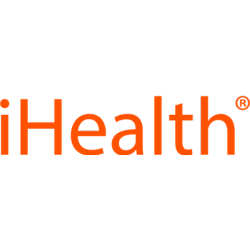Lower Blood Pressure With Therapeutic Foods
Managing lifestyle is important to control hypertension. Increasing your intake of fresh fruits, and vegetables high in potassium, low fat dairy products, reducing sodium, and limiting alcohol consumption are cornerstones to reduce hypertension. Following the DASH (Dietary Approaches to Stop Hypertension) diet or Mediterranean diet that promote healthier food choices are recommended. Risk factors for hypertension are family history, age, race, weight, kidney function, diabetes, an unhealthy diet high in fats, high calorie processed, salty foods, and cigarette smoking.

In general, people with high blood pressure should have between 1,500 milligrams (mg) to 2,400 mg sodium per day, and add foods high in potassium, magnesium, and calcium as food rather than supplements.
Sodium
Foods with more than 300 mg sodium per serving may not fit into your meal plan. You can find out how much sodium is in a food by reading the food label. Remember the amount listed is for one serving, which may be more or less than you eat. Typical diets should be around 2000 mg per day, this means that any given meal should contain no more than a total of 500-650 mg sodium.
Do not salt food at the table; add very little when cooking. Restaurant foods can be very high in sodium. Let the person taking your order know that you are looking for low-salt or no salt choices. Many restaurants have special menus or will make food with less salt.
Potassium
The cells inside of our vessels (endothelial cells) produce nitric acid that relaxes the vessel. Potassium helps to dilate the blood vessels and lower blood pressure. Potassium is in a wide array of foods from dairy to veggies, fruits, and beans.
Try to get a variety from these tips:
- Add a serving of vegetables at lunch and at dinner.
- Add a serving of fruit to your meals or as a snack.
- Canned and dried fruits are easy to use, but check that they don't have added sugar.
- Drink low-fat or skim dairy products any time you would normally use full-fat or cream.
- Add more vegetables and dry beans to your diet.
- Snack on unsalted pretzels or nuts, raisins, low-fat and fat-free yogurt, frozen yogurt, unsalted plain popcorn with no butter, and raw vegetables instead of chips and sweets

Magnesium
Magnesium works alongside calcium and potassium to balance sodium in your body. A shortage of magnesium throws off the balance of sodium, potassium, and calcium which causes the blood vessels to constrict. Not enough magnesium in your body lowers potassium in the body. It is important to have enough magnesium to keep enough potassium in your bloodstream. If there is too little magnesium in your body, too much calcium enters the smooth muscle cells which cause the cells to contract and raise blood pressure. Magnesium promotes relaxation in the blood vessels. Magnesium acts as an anti-inflammatory and helps to soothe the endothelial cells.
Want to add more magnesium to your diet? Try these handy tips:
- Add spinach to your sandwiches and salads
- Nuts and seeds are a very good source of magnesium.
- Tofu is low calorie, a good source of magnesium and calcium that will help to improve your blood pressure.
Calcium
Calcium is the most abundant mineral in the body stored in your bones and teeth. Calcium helps to contract and dilate your vessels to control your blood pressure. Dairy products have a protein that has a blood pressure lowering effect in hypertension.
Need to get more of this mineral?
- Mix yogurt with seasonings to use as a dip for vegetables.
- Add fruit or preserves to yogurt for a dip for fresh fruit.
- Add yogurt to cereal or oatmeal
- Use fat-free yogurt in place of water in baked goods and pancakes
You can lower your blood pressure by simply eating a few foods, low in sodium, rich in potassium, magnesium, and calcium are ways to get your blood pressure lower. The more mineral variety you get, the better off your blood pressure will become.
This feature is coming soon
-
July 09, 2024
-
May 08, 2024
-
March 04, 2024
This feature is coming soon
You May Also Like
Title placeholder
posted_date placeholder
Title placeholder
posted_date placeholder
Title placeholder
posted_date placeholder
Title placeholder
posted_date placeholder
Title placeholder
posted_date placeholder
Title placeholder
posted_date placeholder
Title placeholder
posted_date placeholder
Title placeholder
posted_date placeholder
Title placeholder
posted_date placeholder
Title placeholder
posted_date placeholder
Title placeholder
posted_date placeholder
Title placeholder
posted_date placeholder
Title placeholder
posted_date placeholder
Title placeholder
posted_date placeholder
Title placeholder
posted_date placeholder



